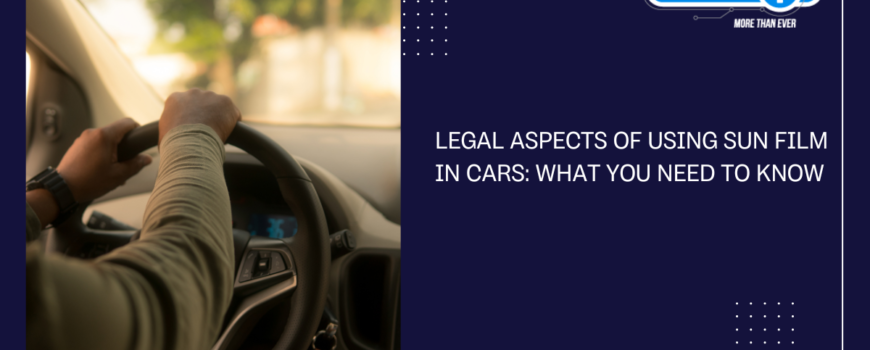Thinking about installing sun film in your car to beat the heat? While sun film can help reduce the glare, heat, and harmful UV rays inside your vehicle, there’s more to consider than just comfort. In India, there are specific laws governing the use of sun film in cars, and failing to follow them can result in fines or legal issues. Let’s break down the legal aspects of using sun film in cars and help you choose compliant options.
Legal Aspects of Sun film in Cars
The use of sun film in cars was once common in India to block excessive heat and protect passengers from harmful UV rays. However, a landmark ruling by the Supreme Court of India in 2012 changed everything. The court banned the use of sun films that don’t meet specific transparency standards, citing safety and security concerns. So, what are these legal standards?
The Indian Motor Vehicle Act specifies the amount of light that should pass through car windows, also known as Visible Light Transmission (VLT). This is what’s legally allowed:
- Front Windshield: Must allow at least 70% VLT.
- Rear Windshield: Must allow at least 70% VLT.
- Side Windows: Must allow at least 50% VLT.
These laws mean that using any sun film in cars that reduces the VLT below these levels is illegal. If your car window tinting is too dark, it could obstruct the view of law enforcement officers and even pose safety risks by reducing visibility at night.

Why Are These Laws in Place?
Understanding the reasoning behind these laws can help you appreciate their importance:
- Safety: Adequate visibility is crucial for safe driving. Dark windows can reduce the driver’s ability to see other vehicles, pedestrians, and road signs, especially in low-light conditions.
- Security: Law enforcement officers need to be able to see inside vehicles during traffic stops and checkpoints. Dark-tinted windows can make it harder for officers to perform their duties effectively.
- Legal Compliance: Adhering to these laws ensures that you avoid fines and legal trouble, keeping your vehicle compliant with current regulations.
Choosing Sun film for Your Car
If you’re looking to add sun film while staying within the law, consider the following:
- Check VLT Ratings: Ensure that the sun film in the car you choose has VLT ratings that comply with legal standards. For the front and rear windows, this means a minimum of 70%, and for side windows, 50%.
- Opt for UV Protection Films: Many UV protection films provide excellent sun protection while meeting legal transparency requirements. They help block harmful UV rays and keep your car cooler without compromising visibility.
- Consider Heat-Resistant Sun films: Heat-resistant sun films are designed to reflect infrared radiation and reduce heat buildup inside your car. They offer great car sun protection while still adhering to VLT standards.
Impact of Different VLT Percentages on Visibility
Understanding how different VLT percentages affect your driving experience is key when choosing sun film for your car. The percentage represents the amount of visible light that passes through the sun film, and here’s how each level can impact visibility and sun protection:
- 70% VLT: This is the minimum legal requirement for front and rear windshields. It allows a significant amount of light in while still offering some protection from glare and UV rays. It’s ideal for maintaining clear visibility while driving, day or night.
- 50% VLT: Commonly used for side windows, this level balances visibility and car sun protection. It blocks out more heat and sunlight than 70% VLT, making it a popular choice for drivers who want a cooler interior.
- Below 50% VLT: Anything below 50% is illegal in India and can dramatically reduce visibility, particularly at night. While darker tints may look sleek, they can compromise your safety and land you in legal trouble.
Penalties for Non-Compliance
If you’re caught using illegal sun film in your car, be prepared to face penalties. According to the current laws in India, the use of sun film that reduces VLT beyond permissible limits can lead to fines. Traffic police are authorized to stop your vehicle, measure the VLT, and issue a penalty if your sun film doesn’t comply with the law.
In many cases, you may also be asked to remove the sun film on the spot. Repeated violations can result in more severe penalties, including suspension of your vehicle’s registration. Therefore, it’s crucial to ensure that any sun film in cars meets the legal standards.
To Sum Up
While sun film in cars can provide valuable protection from heat and harmful UV rays, it’s essential to ensure your installation is within the legal limits. Understanding and following the legal regulations on car window tinting will not only help you avoid fines but also ensure your safety on the road. By choosing compliant sun film and opting for professional installation, you can enjoy a more comfortable ride without breaking the law.

